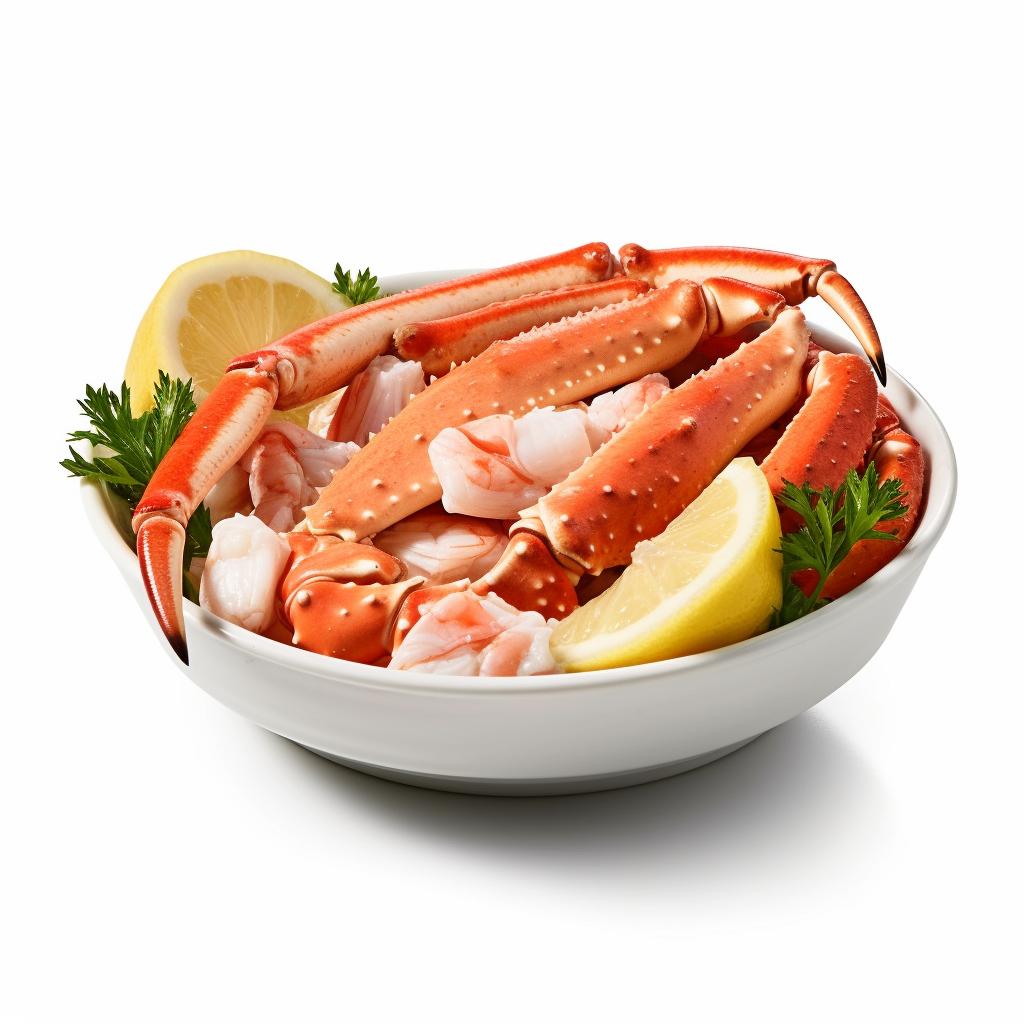Crab Leg Dish
Savor the fresh, succulent flavors of the sea with a delightful Crab Leg Dish. These delectable seafood morsels are sourced from premium quality crab species, oozing with a mildly sweet and delicate taste that is second to none. Their tantalizing flavors and soft texture make them an exquisite addition to an array of recipes - from satisfying pastas to hearty seafood boils.
For a home cooking adventure, consider preparing a traditional Crab Leg Dish, perfectly steamed and lathered with melted garlic butter. Cherished for its fine dining pedigree, yet effortless to prepare, this dish introduces a luxury dining experience right at your kitchen table.
4%
CARBS
30%
FAT
66%
PROTEIN
Crab Leg Dish FAQ
Cooking a crab leg dish is a great way to bring some gourmet seafood flavors to your home dining experience. However, it can be quite easy to get it wrong if you're not careful. There are several common problems that people encounter when cooking with crab legs. Some people overcook the crab legs, which leads to a tough and chewy texture. On the other hand, undercooking the crab legs can result in an unappetizing and potentially unsafe dish. Additionally, some people struggle with the flavors, either adding too much seasoning that overwhelms the delicate taste of the crab, or not adding enough, resulting in a bland dish. To get the most from your crab leg dish, ensure you have a fresh source of crab legs, cook them just long enough to get the desired texture, and use seasonings and butter sparingly to enhance the flavor without overdoing it. Use kitchen shears to carefully slice through the crab legs without destroying the meat. Remember, the flavor of the crab is often best when it's allowed to shine on its own, in all its natural glory. A tip that is not commonly known is that you can use a steamer instead of boiling the crab legs, which can help to maintain more of the crab's natural flavor.
How long should I cook crab legs for?
What kind of seasoning is best for crab legs?
Do I need to thaw the crab legs before cooking them?
How do I know if my crab legs are fresh?
How do I open the crab legs?
Can I reheat cooked crab legs?
Can I grill crab legs?
What should I serve with crab legs?
Do I need to rinse crab legs before cooking?
Do crab legs need to be cooked in batches?
Health Info
Macros
1g
CARBS
9g
FAT
20g
PROTEIN
Allowed on these diets
LOW FAT
HIGH CALCIUM
KETO
PALEO
WHOLE 30
MEDITERRANEAN
LOW CARB
GLUTEN FREE
Contains these allergens
CRUSTACEAN SHELLFISH
MILK




